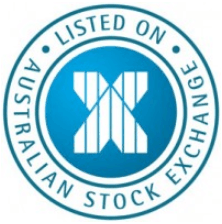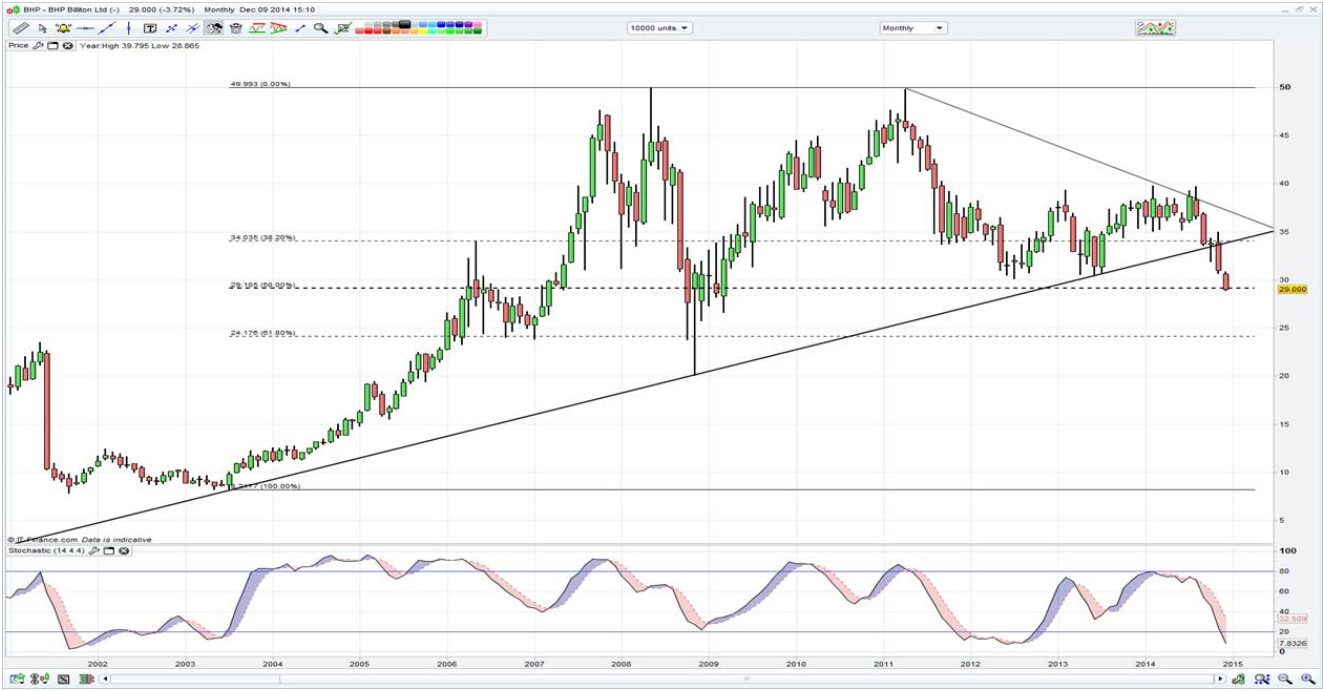
Chris Weston, Chief Market Strategist at IG Markets
For anyone hoping for a quiet close to the year it seems there are could be many twists and turns yet ahead of the New Year.
Oil prices have stolen the lion’s share of the headlines again and the volatility we are seeing in the front month oil contract is staggering. The prospect of a rally anytime soon seems low, especially with further operating rigs being set up in the US and US production operating at the highest levels since 1983. Global supply is outpacing demand by such an extent that rallies in the commodity are selling opportunities and the lack of clarity is shaping traders’ activities.
Similar to what we have seen in the iron ore space, traders are questioning what the future holds, not just for the energy producer or explorer names, but the companies that are direct beneficiaries of these companies’ CAPEX plans. Every energy company CEO would have looked closely at their future spending intentions. Santos (STO) has become the poster boy of the global energy space, given its highly committed CAPEX intentions. Traders have taken an axe to the share price, courtesy of a downgrade from S&P that was always going to happen. The question is how much they scale back their spending and therefore what impact that will have on its unsanctioned resources. It’s also possible we’ll we see a dividend reinvestment program, hybrid issuance (this failed recently) or equity raising.
The corporate bond market is therefore key and perhaps one of the key reasons why equity is selling off. Over the last few years, the global energy producers have issued a huge amount of corporate debt, much of which has been smashed of late. Perhaps the saving grace is that much of this debt doesn’t need to be repaid for at least five years. However, moves in credit seem to be a leading indicator for equity.
Iron ore miners are also getting savaged and the lack of clarity has once again seen traders pull buy orders in anticipation of lower prices. The irony of the falls in key commodities is we are not only seeing lower inflation expectations, but are also seeing equity deflation where traders feel they can buy at lower prices.
This environment is the perfect storm for money managers who have the ability to go short and, judging by the trends, many would have made a lot of money in the last few months. Will this change anytime soon? Perhaps, but I can’t see Warren Buffet averaging down in this move despite the sector being so unloved.
BHP headed to A$24?
BHP looks awful on the monthly chart and, while I wouldn’t generally look at this timeframe, you simply can’t get away from the fact price action suggests we could feasibly see A$24 or even A$20 at some stage next year. Price is currently testing the 50% retracement of the 2003-to-2008 rally and a close below A$29.11 could be that trigger.
(Daily chart of BHP)

The falls in the oil price are keeping inflation expectations low, and if you look at the swaps market we can see five-year inflation expectations haven’t moved at all despite the European Central Bank (ECB) signalling it is about to embark on huge unconventional monetary easing.
Yesterday’s comments from Austrian central bank head Ewald Nowotny that a government bond purchase program (QE) could be useful saw the German 10-year trade seven basis points lower to 71. There is no way the German 10-year should be trading at these levels without QE now being largely in the price.
Will ECB QE actually work?
Still, any QE program will be limited in nature and therefore will have limited and potentially short-lived market ramifications. The market wants to see a programme that is unlimited in nature and, if we estimate that the ECB potentially buy €650 billion in government bonds, it would equate to 5.5% of total Eurozone government debt. This pales in comparison to the near 50% seen in Japan.
With this in mind, this Thursday’s second Targeted Long-term Refinancing Operation (TLTRO) is going to be the big kicker. The ECB feel it could see a bigger uptake than we saw a few months ago, but I feel another low ball take-up is the likely risk. A take-up below €100 billion should see sovereign bonds and equity markets firm on the idea that the ECB will announce QE on 22 January. I’ll be watching for an upside closing break of trend resistance in the CAC and DAX, but until then I’ll stay neutral.
European markets are looking for a weak open, with Asian markets mostly offered and the ASX 200 the clear underperformer. The stage was set on Friday for a positive run into the year end, but price action in a number of markets seems to be suggesting caution could be the way. This was seen front and centre with a 20.2% upside move in the VIX index yesterday . In upcoming trade, the US Jobs Openings and Labor Turnover (JOLTS) is released and we know Janet Yellen is a big fan of looking at the level of ‘quits’ rates. We also get trade numbers from Germany and France, while UK industrial production numbers are due.